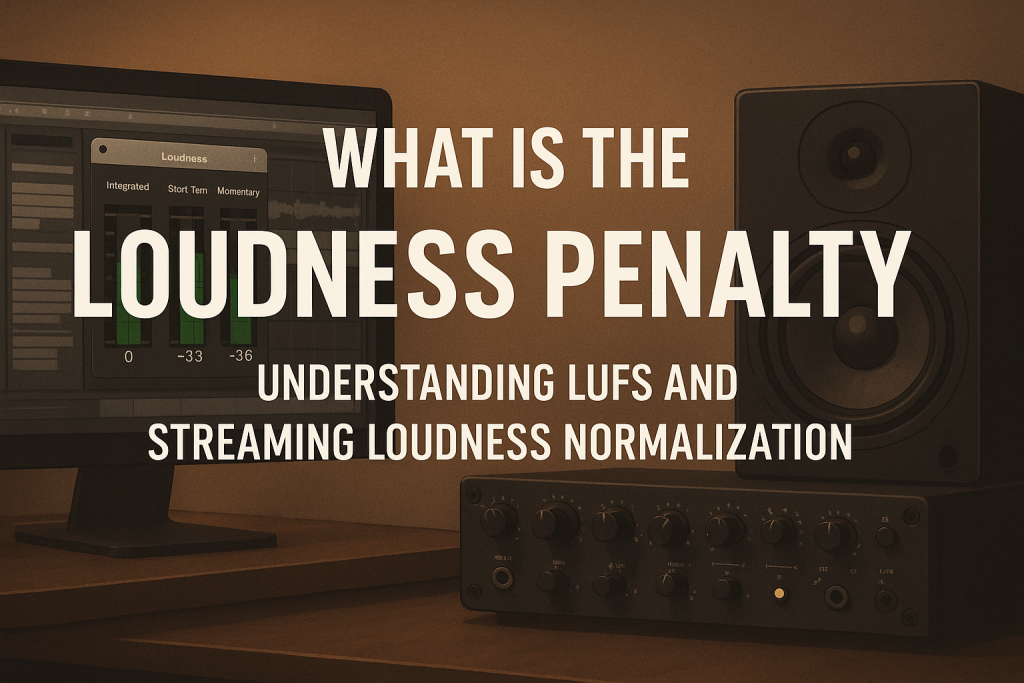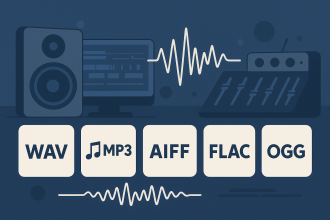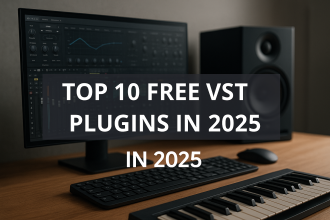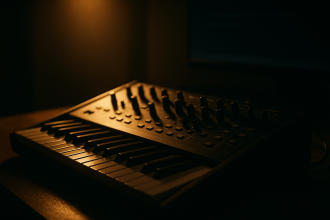What Every Music Producer Should Know
What Is Loudness?
In music production, loudness refers to how loud a track sounds to the human ear — not just its peak volume, but its overall perceived energy and intensity. Two songs may hit the same peak level, yet one feels louder due to compression, limiting, or EQ shaping that enhances perceived volume.
Modern mastering often pushes tracks to sound louder to stand out on playlists or the radio, but excessive loudness can cause distortion, ear fatigue, and poorer results once streaming platforms normalize playback levels.

What Is LUFS?
LUFS (Loudness Units Full Scale) is the standard unit for measuring perceived loudness. It calculates how the human ear experiences sound over time, not just instantaneous peaks.
- Integrated LUFS measures the overall loudness of an entire track.
- Short-term LUFS focuses on brief sections of a few seconds.
- Momentary LUFS shows real-time loudness changes.
Different streaming platforms have different target LUFS levels:
- Spotify: about -14 LUFS
- YouTube: about -13 to -14 LUFS
- Apple Music: about -16 LUFS
- Tidal: about -14 LUFS
Tracks louder than these targets are automatically turned down. That reduction is what’s known as the loudness penalty.
What Is the Loudness Penalty?
The loudness penalty refers to how much a streaming service reduces the volume of a track that exceeds its loudness target. It’s not a punishment — it’s an automatic adjustment to maintain consistent playback loudness between songs.
For example, a master at -8 LUFS uploaded to Spotify will be reduced by roughly -6 dB. That means heavily compressed or limited tracks lose their loudness advantage and may even sound flatter compared to more dynamic mixes.
In simple terms: pushing your master louder won’t make it sound better online; it will just get turned down.
Loud vs. LUFS: What’s the Difference?
“Loud” is subjective — it’s about how powerful and energetic a mix feels. LUFS is objective — a numerical value that represents perceived loudness.
A well-balanced track can sound big and dynamic even at -14 LUFS, while a mix mastered too hot may sound harsh or lifeless after normalization. The goal is to strike the right balance between punch, dynamics, and clarity.
What Does LoudnessPenalty.com Do?
LoudnessPenalty.com is a free online analysis tool created by MeterPlugs and mastering engineer Ian Shepherd. It allows artists and engineers to preview how their music will be adjusted by major streaming services before release.
By uploading a WAV or MP3, you can instantly see how much each platform will reduce your track’s loudness:
- Spotify
- YouTube
- Apple Music
- Tidal
- Pandora
The tool displays results as decibel offsets, such as “Spotify: -5.4 dB” or “YouTube: -6.2 dB,” and lets you preview how your track will sound after normalization. This helps determine if your master is too loud and whether it maintains its intended impact across platforms.
Why the Loudness Penalty Matters
Understanding the loudness penalty helps producers master smarter. It encourages preserving dynamics and clarity instead of crushing them with heavy limiting. Your track will sound consistent across platforms, avoid unexpected playback drops, and deliver a more pleasant listening experience.
The loudness penalty isn’t an obstacle — it’s a guide. By mastering for streaming standards, you ensure your mix translates cleanly everywhere.
Tools for Managing Loudness
- Youlean Loudness Meter – free LUFS meter for real-time monitoring
https://youlean.co/youlean-loudness-meter - MeterPlugs Dynameter – visualizes dynamic range and loudness balance
https://www.meterplugs.com/dynameter - iZotope Insight 2 – professional loudness and metering suite
https://www.izotope.com/en/products/insight.html - Waves WLM Plus Meter – advanced broadcast-standard loudness monitoring
https://www.waves.com/plugins/wlm-loudness-meter
Final Thoughts
The loudness penalty reminds producers that louder isn’t always better. A balanced, dynamic mix will always sound more musical and engaging than one pushed to its limits. Rather than competing for volume, focus on emotion, groove, and depth — because streaming platforms have leveled the playing field.
![]()

















